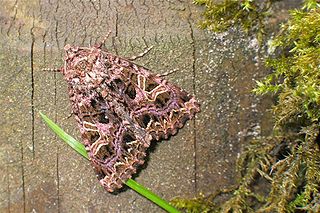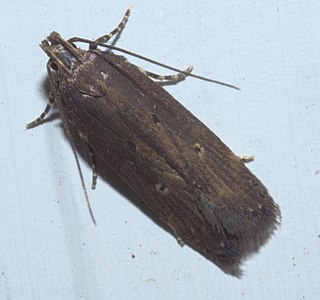Related Research Articles

Founded in 1904, the Association of Chartered Certified Accountants(ACCA) is the global professional accounting body offering the Chartered Certified Accountant qualification (ACCA). ACCA's headquarters are in London with principal administrative office in Glasgow. ACCA works through a network of over 104 offices and centres in 52 countries - with 323 Approved Learning Partners (ALP) and more than 7,300 Approved Employers worldwide, who provide employee development.

Leptotes plinius, the zebra blue or plumbago blue, is a species of blue butterfly (Lycaenidae) found in Sri Lanka, India to Australia. The species was first described by Johan Christian Fabricius in 1793.

Logania watsoniana, or Watson's mottle, is a small but striking butterfly found in India that belongs to the lycaenids or blues. The species was first described by Lionel de Nicéville in 1898.

The roseate skimmer is a species dragonfly in the family Libellulidae. It is native to the Americas, where its distribution extends from the United States to Brazil. It is common and widespread. It is an introduced species in Hawaii.

Pheosia tremula, the swallow prominent, is a moth from the family Notodontidae. The species was first described by Carl Alexander Clerck in 1759.

Hydraecia micacea, the rosy rustic, is a moth of the family Noctuoidea. It is found across the Palearctic realm from Ireland to Siberia. It reaches Japan and is introduced to eastern USA, Quebec and Ottawa.

Sideridis rivularis, the campion, is a species of moth of the family Noctuidae. It is found in from the northern part of the Iberian Peninsula, through the whole of Europe. To the east, it is found in Central Asia and Siberia, up to Manchuria. To the south, it is found in the Mediterranean Sea region and parts of Asia Minor. In the Alps, it is found at up to 1,600 metres above sea level.

Polia bombycina is a moth of the family Noctuidae. It is found in the Palearctic realm from Ireland to Japan including the Russian Far East and Siberia.

Hellinsia inquinatus is a moth of the family Pterophoridae. It is found in North America, including Florida, Mississippi, Oklahoma, Tennessee, Maryland, Alabama, Texas, Missouri, Colorado and Arizona. It has also been recorded from Hispaniola, Mexico, Puerto Rico and St. Thomas Island.

Aristotelia roseosuffusella, the pink-washed aristotelia, clover aristotelia moth or garden webworm, is a moth in the family Gelechiidae. It is found in North America, including Alabama, Georgia, Illinois, Kentucky, Maryland, Massachusetts, Michigan, New Jersey, Oklahoma, Ontario, South Carolina, Tennessee and Virginia. The species was first described by James Brackenridge Clemens in 1860.
Scopula modesta is a moth of the family Geometridae. It is found in Sri Lanka and India.

Chionodes discoocellella, the eyeringed chionodes moth, is a moth in the family Gelechiidae. It is found in the United States, where it has been recorded from Maine to South Dakota, Florida, Texas and Colorado.
Pseudotelphusa palliderosacella is a moth of the family Gelechiidae. It is found in North America, where it has been recorded from Alabama, Illinois, Kentucky, Maine, Maryland, Ohio, Oklahoma, Texas and West Virginia.
Gelechia maculatusella is a moth of the family Gelechiidae. It is found in North America, where it has been recorded from California.

Aristotelia rubidella is a moth of the family Gelechiidae. It was described by James Brackenridge Clemens in 1860. It is found in North America, where it has been recorded from Alabama, Alberta, Arkansas, British Columbia, California, Florida, Georgia, Illinois, Indiana, Iowa, Kentucky, Louisiana, Maine, Manitoba, Maryland, Massachusetts, Michigan, Mississippi, New Jersey, North Carolina, Ohio, Oklahoma, Ontario, Quebec, South Carolina, Tennessee, Texas, Virginia, Washington, West Virginia and Wisconsin.
Thoscora rubrivena is a moth of the family Megalopygidae. It was described by E. Dukinfield Jones in 1912. It is found in Brazil.
Thoscora omayena is a moth of the Megalopygidae family. It was described by William Schaus in 1904. It is found in Guyana.
Thoscora brugea is a moth of the Megalopygidae family. It was described by William Schaus in 1904. It is found in Venezuela.

Trosia dimas, the rosy ermine, is a moth in the family Megalopygidae. It is found in Colombia, Venezuela, Ecuador, Brazil, and Peru.
Trosia ochracea is a moth of the family Megalopygidae, first described by Walter Hopp in 1922. It is found in Brazil.
References
- ↑ Beccaloni, G.; Scoble, M.; Kitching, I.; Simonsen, T.; Robinson, G.; Pitkin, B.; Hine, A.; Lyal, C., eds. (2003). "Thoscora acca". The Global Lepidoptera Names Index . Natural History Museum . Retrieved May 16, 2018.
- ↑ Proceedings of the Zoological Society of London
| This article relating to the superfamily Zygaenoidea is a stub. You can help Wikipedia by expanding it. |